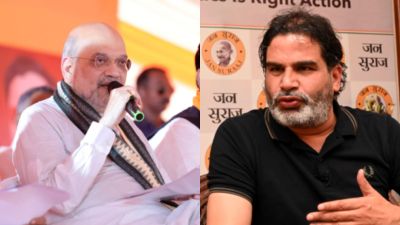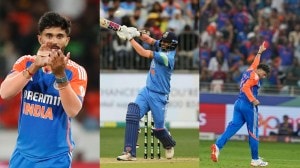A global championship that could become really big in the new millennium
STOCKHOLM, JULY 27: Forget Brazil or France -- robots could be the World Cup stars of the new millennium.The robot World Cup Soccer Tourn...

STOCKHOLM, JULY 27: Forget Brazil or France — robots could be the World Cup stars of the new millennium.
The robot World Cup Soccer Tournament starts in Stockholm tomorrow and includes competitions for robot dogs alongside small robots, medium-sized robots and simulated robot soccer.
A team of man-sized automatons are expected to be taking part in the annual championships within three years, Robocup spokesman Mats Wiklund said.
“This humanoid league will most likely take place in 2002 although we don’t expect the robots to stand a chance against humans at that stage,” Wiklund told Reuters.
“However, we do expect that by 2050 robots will be able to play soccer at World Cup level and possibly beat human teams.”
The Robocup has attracted an increasingly large following since it started in Nagoya, Japan, in 1997 with 40 teams. Robocup 1998 was held in Paris and next year’s competition will be played in Melbourne.
Robocup ’99 in Stockholm will see 90 teams from 20 countries competing in 20-minute matches in the four leagues.
The small robot league involves robots about 15 cms in diameter — roughly the size of a tea-cup — playing on a pitch the size of a table tennis table. An overhead camera monitors the game and sends signals to the robot telling it how to move.
The medium-sized league has robots of 50 cms diameter and 80 cms high — about the size of small wastepaper bin. They have cameras attached and are programmed to detect the ball and communicate with other players.
The simulated league is played on computers while the dog league involves 30cm long aibo robot dogs from Sony.
Wiklund said the main rule was a ban on human interference.
“You have to programme the robots beforehand so they can take care of any situation that might arise,” Wiklund said.
This can lead to some mishaps as the technology develops.
“Last year one robot which was programmed to detect the ball by its orange colour got the idea that a spectator wearing exactly the same colour T-shirt was the ball,” Wiklund said.
“The robot locked on to that person and tried to get off the pitch to him. In the end the organisers had to ask him to put a jacket on over his T-shirt.”
Wiklund said there was a serious side to the event which is held in Stockholm in conjunction with the international joint conference on artificial intelligence.
The purpose is to promote research in artificial intelligence and robotics by providing a standard challenge where a range of technologies can be examined.
Soccer-playing robots have to find and direct the ball and communicate within a team in a demanding, real-life scenario.
“This kind of technology can be applied to clearing minefields, search and rescue operations after an earthquake or in space when the distance is so great that you can’t operate the equipment by remote control,” Wiklund said.





- 01
- 02
- 03
- 04
- 05


























